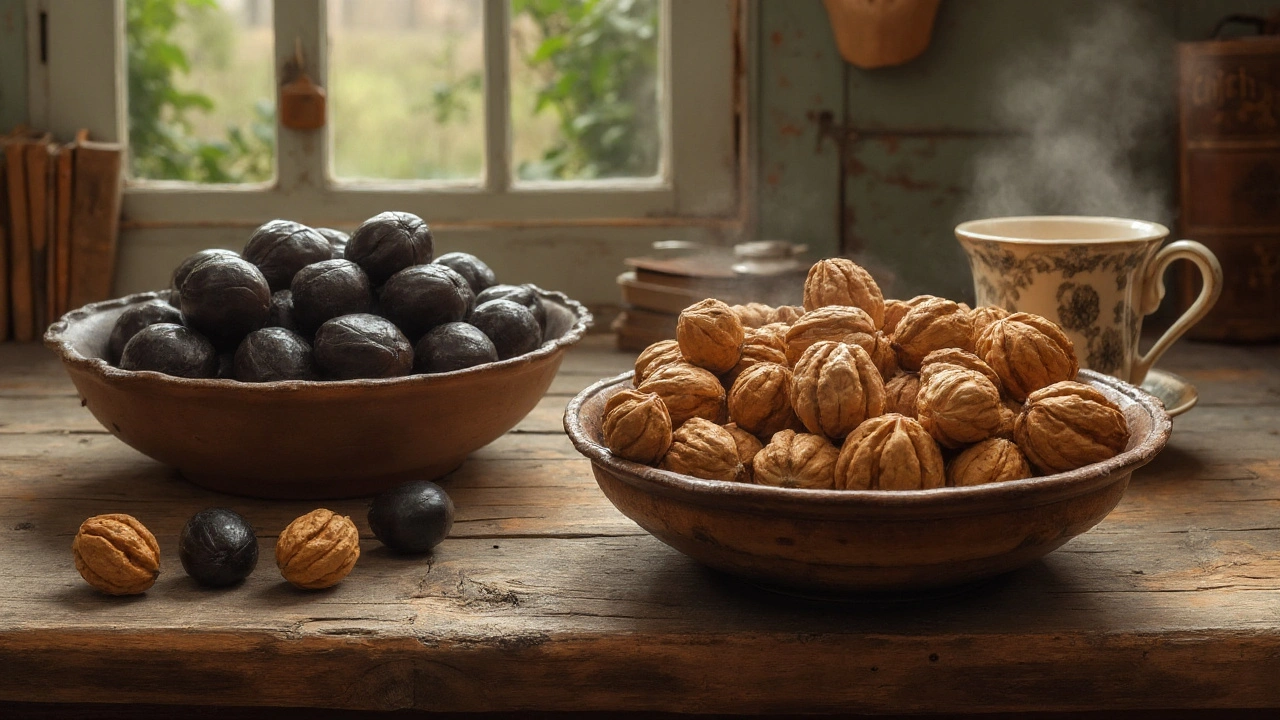English Walnuts: Health Perks, Buying Tips & Easy Uses
If you’ve ever snacked on a handful of crunchy English walnuts, you already know they’re tasty. But there’s more to these nuts than flavor – they pack nutrition, can boost heart health, and are super versatile in the kitchen.
Why English Walnuts Are Good for You
Each ounce (about 14 halves) delivers roughly 185 calories, 4 g protein, 18 g healthy fats and a solid dose of omega‑3 fatty acids. Those plant‑based omega‑3s help lower bad cholesterol and support brain function. Walnuts also provide magnesium, phosphorus, vitamin E and antioxidants that fight oxidative stress.
Studies show regular walnut consumption can improve blood vessel flexibility, reduce inflammation, and even aid weight management when eaten in moderation. So swapping a bag of chips for a small handful of walnuts isn’t just satisfying – it’s a smart move for your heart and mind.
How to Choose Fresh English Walnuts
When you’re at the store, look for nuts that are uniform in size, light-colored inside, and free from cracks or mold spots. A quick smell test helps: fresh walnuts have a mild, nutty aroma; stale ones smell rancid.
If possible, pick unshelled kernels because they retain more natural oils than pre‑shelled options that may have been exposed to air longer. Check the expiration date and favor packages with resealable closures to keep moisture out.
Storing Walnuts So They Stay Crunchy
Walnut oil oxidizes quickly, so proper storage matters. Keep whole shells in a cool, dark pantry for up to six months. Once you crack them open, transfer the kernels to an airtight container and stash it in the refrigerator – they’ll stay fresh for about a year.
If you buy in bulk, consider freezing the nuts. A freezer‑safe bag sealed tightly will preserve flavor and texture for even longer. Just let them warm to room temperature before using so they don’t get soggy.
Simple Ways to Add English Walnuts to Your Meals
Throw a handful into morning oatmeal or yogurt for extra crunch. Blend them into smoothies for creamy thickness without dairy. In salads, walnuts pair well with apples, goat cheese, and balsamic vinaigrette – the sweet‑savory combo is a crowd‑pleaser.
If you love baking, substitute part of the flour in muffins or banana bread with ground walnut pieces. The nutty flavor intensifies chocolate chips or dark cocoa, giving your treats a richer taste.
Even a quick snack works: toss walnuts with a pinch of sea salt and a drizzle of honey, then bake at 350°F for ten minutes. You’ll get sweet‑salty clusters perfect for movie night.
Potential Drawbacks & Who Should Watch Out
Walnuts are high in calories, so portion control matters if you’re watching weight. They also contain oxalates, which can contribute to kidney stones in susceptible individuals. If you have a nut allergy, obviously skip them.
Overall, English walnuts are an easy way to boost nutrition without sacrificing taste. Pick fresh nuts, store them right, and sprinkle them into meals – your body (and palate) will thank you.
Black Walnuts vs English Walnuts: Nutritional Benefits, Health Perks, and Recipes
Curious about black walnuts vs English walnuts? Learn the differences in nutrients, health perks, and how to use them in everyday recipes. A must-read for nut lovers.

